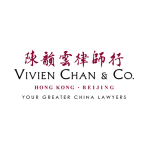The Anti-Unfair Competition Law of the People's Republic of China (AUCL) has proven to be a valuable weapon in scenarios where traditional intellectual property (IP) rights are not available. Common examples include tricky imitation of trade dress and advertising materials, which may not be sufficiently protected under the traditional IP right infringement regulations. This is particularly so if claimants do not own any prior IP right registrations in China.
Recent judicial developments also show broader application of the AUCL to combat trademark squatting, where Chinese courts recognise trademark squatting as an act of unfair competition and order squatters to compensate right owners for their legal expenses.
1 Legal provisions
Two key provisions of the AUCL related to the protection of IP rights are articles 2 and 6.
Article 6 protects product names, packaging, decoration, people’s names, company names, trade names, and domain names with a certain degree of influence (i.e., reputation) in Mainland China and prohibits unauthorised use of the aforesaid causing consumer confusion.
Article 2, the ‘catch-all’ provision, requires businesses to uphold the general principles of free will, equality, fairness, and good faith in their operations and comply with laws and business ethics. It broadly defines “acts of unfair competition” to include business activities that disrupt the order of market competition and cause damage to the lawful rights or interests of other businesses or consumers.
The Supreme People’s Court published a judicial interpretation concerning the application of the AUCL in 2022, wherein it clarifies that if an infringing act does not constitute infringement under the Trademark Law, the Copyright Law, and the Patent Law, and an act of unfair competition under Article 6, but disrupts the market competition order and damages the lawful rights or interests of others, the court may make a ruling based on Article 2. As one may expect, Article 2 is commonly invoked in practice to tackle infringement activities that fall outside the scope of the Chinese IP laws and Article 6 of the AUCL.
In the following, different scenarios will be analysed to see how the AUCL may serve as a powerful tool to tackle non-traditional IP infringement.
1.1 Conflict between the Trademark Law and the AUCL
A trademark registration grants a proprietor an exclusive right to use the registered mark in relation to the registered goods/services. The use of a registered mark is generally recognised as a defence to trademark infringement. Sophisticated Chinese infringers register confusingly similar trademarks and openly sell and market infringing products under such registered marks. Even though right owners own an earlier trademark registration, it is generally difficult for them to establish trademark infringement before the infringers’ registrations are invalidated.
In the famous case of New Balance v New Barlun (China) Co., Ltd. (2022), the Shanghai Intellectual Property Court was asked to confirm whether New Balance could invoke Article 6 of the AUCL and claim that New Barlun’s sale of training shoes bearing the “N” logo, below left, and that have similar designs to those of New Balance constitutes unfair competition, despite the fact that New Barlun owned prior registrations for the logo.
The Shanghai Intellectual Property Court affirmed the lower court’s decision and held that trademark right and right under the AUCL are two different legal rights and can coexist. New Balance was seeking protection for its prior training shoe design, which comprises two key elements:
The “N” logo below, below right; and
The way the logo is positioned and presented on training shoes.

When there is a conflict between two legal rights, one shall consider the bona fide principle and prioritise the safeguarding of prior rights and interests. As New Balance’s design constituted a product decoration with a certain degree of influence prior to the filing date of New Barlun’s registered trademarks, considering the similarity between the parties’ design that led to market confusion, and that New Barlun as a competitor should have knowledge of New Balance’s training shoe design, the court ruled that New Barlun’s act constituted an act of unfair competition.
This case illustrates that one may simultaneously enjoy protection under the Chinese IP laws and the AUCL – one does not exclude the other. When there is a conflict between rights, the court will examine if the claimant’s rights take priority over the defendant’s and if the defendant is acting in bad faith.
1.2 The AUCL applied to imitation of trade dresses and promotional materials
Apart from devising impactful brand names and logos, brand owners also make substantial investments in developing iconic and memorable trade dresses and promotional campaigns, which help to build brand recognition and consumer loyalty. However, it may be difficult and cost intensive to protect all such trade dresses and promotional campaigns by way of IP right registrations.
Article 6 of the AUCL could be the go-to provision for the protection of trade dresses. It specifically protects product packaging designs and decorations with a certain degree of influence. In the appeal case of Decathlon v Fujian Aoku Sports Goods Co., Ltd. (2022), the Anhui Higher People’s Court confirmed that the store layout and decorations of Decathlon reached a certain degree of influence and enjoyed protection under the AUCL. Although the defendant argued that most of the design elements of Decathlon’s stores are widely used in the industry, the court ruled that the choices, combinations, and arrangement of the store design elements are unique and distinctive. Consumers would associate the store designs with Decathlon. The defendant’s stores adopted highly similar in-store advertisement designs, drawings of sports figures, and store layout designs, etc.
Although the parties’ trade names are different (i.e., “Decathlon” versus “Aoku”), the defendant, and the Chinese internet, referred to the defendant as “China’s Decathlon”. Accordingly, the court ruled that the consumers would likely be confused and mistaken that the parties are economically linked. The Anhui Higher People’s Court overturned the lower’s court decision that the adoption of similar store designs would not cause confusion and held that the defendant’s act constituted unfair competition.
For advertising materials, a common way to protect them is by way of copyright. However, the threshold for establishing originality is high, and a high degree of similarity between the copyrighted work and the infringing work is required to establish copyright infringement. It thus may not be straightforward to establish infringement.
Recently, Vivien Chan & Co successfully assisted a luxury cosmetics and skincare house in stopping a competitor from using similar design elements in promotional materials in relation to competing products by strategically arguing that its act constituted unfair competition under Article 2 of the AUCL. In this case, the counterparty adopted promotional materials with design elements in arrangements that are very similar to Vivien Chan & Co’s client’s promotional materials used on its own iconic products of the same kind.
The court held that while it is acceptable to use the same elements or materials when promoting similar products in advertisements because such products may have common characteristics and advertising companies may draw reference from prior advertising works within a reasonable range, one shall not infringe the interests of, or cause damage to, others.
The court ruled that the adoption of the same, or a similar, arrangement of visual elements and theme colour could hardly be due to coincidence. The counterparty took unfair advantage of Vivien Chan & Co's client’s reputation and violated widely accepted industry codes (including the Advertising Self-Discipline Declaration issued by the China Advertising Association cited by Vivien Chan & Co) and business ethics, thus constituting unfair competition.
As illustrated above, the AUCL may come in handy when protecting unregistered brand assets and where the parties’ designs or materials are similar to a certain degree but are not similar enough to find infringement under the Chinese IP laws.
1.3 Wider application of the AUCL regarding trademark squatters
Despite the China National Intellectual Property Administration’s effort in combating trademark squatting, which can be seen from the higher success rate in opposition and invalidation proceedings against bad faith filings than before, trademark squatting is still active in China in view of the low filing costs and the absence of adverse costs awards in trademark opposition and invalidation proceedings. Furthermore, the State Administration for Market Regulation tends to be reluctant in invoking its power to impose administrative penalties on squatters.
In recent years, Chinese courts have been more willing to treat bad faith filing activities as an act of unfair competition and impose damages on squatters. In the landmark case of Emerson Electric Co. v Xiamen Anjier Water Angel Drinking Water Equipment Co., Ltd and others (2021), the court ordered the squatters to compensate Emerson for its attorney’s fees and other reasonably incurred expenses under the AUCL in light of their bad faith filing activities.
The court held that the bad faith filing activities interfered with Emerson’s business operation such that Emerson had to commence administrative actions to combat such bad faith filings, thus constituting unfair competition. The court awarded around $250,000 to Emerson (considering that it had spent over $200,000 of legal costs in challenging the bad faith filings) and ordered the defendant to cease the bad faith filing activities.
This case sets a precedent for ruling that mere trademark squatting, devoid of commercial use of the marks, could amount to unfair competition. It is also encouraging that the court held that the owner of the defendant’s company and its trademark agent are jointly and severally liable for unfair competition. This case came as a strong blow to the squatting industry, signalling to squatters and trademark agencies that they can be liable for the right owners’ legal expenses in combating bad faith filings.
2 Tips for successful unfair competition claims
It is essential to show to the Chinese courts that there has been substantial prior use of the infringed matter and that it has acquired a certain degree of influence or reputation in Mainland China. Even though Article 2 of the AUCL does not require the infringed matter to have acquired reputation, by submitting evidence of prior use, this could help to establish the existence of a corresponding relationship between the infringed matter and the claimant, serving as a basis for finding that the use of similar designs or signs would cause damage to the claimant.
From Vivien Chan & Co’s experience in handling unfair competition cases, Chinese judges tend to attach importance to audit reports on sales volumes and promotional expenses. These reports could conveniently reflect the revenue and expenses in promotion and spare the judges from reviewing vast amounts of contracts and invoices. Evidence of awards and recognitions bestowed on the infringed matter is also useful for judges to determine whether the infringed matter has reached a certain degree of influence in Mainland China. Claimants may consider obtaining a search report from the National Library of China for articles mentioning the infringed matter or even conducting market surveys to demonstrate the reputation acquired, and the consumer’s recognition in China.
For trade dresses and advertising materials, it is important to clearly define the infringed matter and provide detailed comparisons between the infringed matter and the infringing matter. Testimonial evidence may also be used to explain the origin of the design and the creation process so as to show the uniqueness of the design.
3 Final thoughts on a valuable tool
An infringed matter could be protected by the Chinese IP laws and the AUCL at the same time. Right owners may invoke either right or both rights to counter different forms of infringing activities. As illustrated in the above cases, despite the evidential burden, the AUCL has proven to be a valuable tool when infringing activities do not fall squarely within the ambit of the Chinese IP laws but are designed to take unfair advantage of the reputation of the infringed matter or cause consumer confusion.
With Vivien Chan & Co's years of experience in protecting clients’ brand assets in Mainland China, the firm regularly helps its clients to strategise an effective and winning game plan for combating different natures of infringement.













